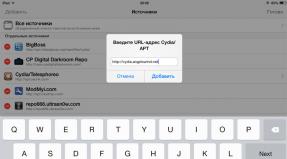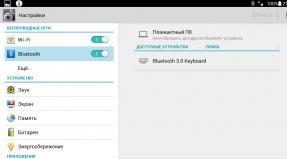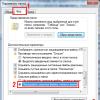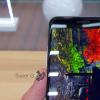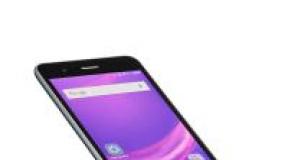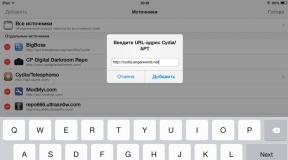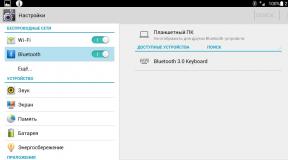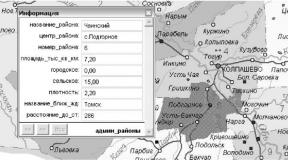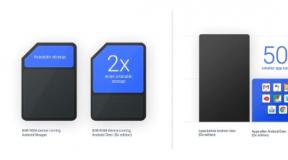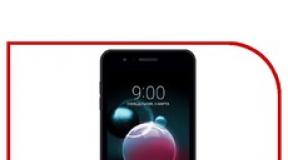I lost a file on a flash drive, how can I find it? What to do if folders with information on a flash drive are missing due to a virus. Two main reasons: why the information disappeared
Once again a client came to me with a familiar problem: files on the flash drive are missing. The problem occurs frequently, and in most cases viruses are to blame. Viruses, as a rule, are not so difficult to remove, but to restore files that disappeared from the flash drive, is not always simple. The situation can be divided into two groups: simple, when files are easily recovered, and complex when it is necessary to work in command line. And now more details.
Situation number one.
The files that were in the root of the flash drive are there, as well as the folders, but when opened, the folders open empty. This is usually due to viruses: AutoRun.FlyStudio.B, AutoRun.PSW.Delf.C, Dorkbot.D and many others. They all work on the same principle.
The virus changes the attributes of your folders to hidden and system, and replaces the folders with an EXE file with the same name and folder icon. If you do not have the display of hidden and system files enabled, you will not see files which disappeared from the flash drive. To display it in a window with an open flash drive, click Tools => Folder Options => Click on “show” hidden files, folders and drives" and uncheck the "hide protected system files(recommended)" => answer yes to the warning.
 The files have appeared - we rejoice.
The files have appeared - we rejoice.
Now you need to change the folder attributes so that they are displayed on any computer, but, unfortunately, built into Windows means It won't be possible to do this. The well-known Total Comander will come to our aid. Let’s launch, first go to Configuration => Settings => Panel Contents and check the box “show hidden/system files”, close the settings window.

Open our flash drive => select all the “lost folders” => click Files => Change attributes and uncheck the Hidden and System attribute.
 That's it, we have returned the folders to their original state. Don't forget to check back the "show hidden files, folders and drives" box in Windows Explorer.
That's it, we have returned the folders to their original state. Don't forget to check back the "show hidden files, folders and drives" box in Windows Explorer.
Situation number two.
Now let's move on to the difficult option. If after displaying hidden files nothing has changed on the flash drive, then most likely you have a virus known as Radmin.13. Where did he put your folders? Radmin.13 all your folders with files were moved to a folder named “..” exactly like that - 2 dots. The fact is that Windows prohibits folders whose names end with a dot, so we don’t see a folder with the name “..”.
To return the contents of the “..” folder, we need to rename it. To do this we need the command line. Go to C:\Windows\System32, copy the cmd.exe file to the root of our flash drive, run it and enter the command
Dir/x/ad
The dir command displays the entire contents of our flash drive, the /x switch displays short file names, and the /ad switch displays only folders.

Now we see that the folder with the name “..” corresponds to the short file name “E2E2~1”. All we have to do is rename this folder and gain access to our files. This is done simply:
Ren E2E2~1 lost
those. we rename the folder “E2E2~1” to the “lost” folder. We go to the flash drive and see the “lost” folder, and in it are all those files which gone missing.
Hello, friends! Today, many people use flash drives and save on them. important information, documentation. And sometimes it happens that files have disappeared from a flash drive, how to recover them - they don’t know and think that everything is lost. But often the information can be returned. We will discuss below how to do this and why the folders on the flash drive and other documents disappeared.
Where did it all go?
The answer to the question is this: viruses are mainly to blame for file loss. As a rule, flash memory is often used on one computer, then on another, etc. And few people check it for viruses, but in vain. Often flash drives turn into a carrier of any “infection”. Therefore, I advise you to periodically check it for viruses.
It is extremely rare, but it does happen, that data loss occurs when the flash card is incorrectly removed from the PC. Like this? You copy the data and after the process is finished, you remove the memory from the connector, this is not entirely correct. IN Windows system There is a function for safely removing drives. This is done very simply and does not take much time.
How to get files back?
Now we will try to recover the missing information. Most likely, the folders and files are there, you just don’t see them, since viruses replace their format and change their status to “hidden”.
There are two ways to see hidden files. You can read how this is done in my other article:
After information that was hidden is displayed, you will need to change the attributes so that all files are visible to you as usual.
To do this, select all the folders and other information found on the flash drive, right-click and select “properties”.

If you do it through Total Comander then: select flash, - “Select” - “Select all” - “Change attributes”.

Uncheck the “Archive”, “Read Only”, “Hidden” and “System” checkboxes. The information should now appear as usual.

Option for advanced users:
Go to “Start” in the command line and type cmd
In the window that appears, write: “attrib -h -r -s /d /s #:\*.*”, instead of # - put the letter that indicates your flash drive. After this, all information will be visible to you.
If the first option doesn't work
There is another option: the virus has moved your information to a folder with a changed name. It might look like this ".." or like this ".". It doesn’t matter, our task is to rename and return everything to its place. To do this you will need the command line.
Enter the cmd command into it.



If you see something like E2E2, E2E2~1 or maybe something similar. Write ren E2E2~1 NewDoc and press Enter. This procedure will rename the folder to NewDoc.
Now you can open the flash drive and find the NewDoc folder, it should contain your “lost” documents. After which I would advise you to scan the flash drive for viruses.
I'll end here. If any advice helped you, please share it with us. in social networks, the buttons are below, thank you!
A compact USB drive, known to most users as a flash drive, is today considered the most common device for storing and exchanging various data. A frequently occurring problem: “No files are visible on the flash drive” can have quite disastrous consequences. After all, often transferred to Flash USB Drive device important documents of a confidential nature, unique photographs and other types of valuable information may be in a single copy. If you encounter similar problem for the first time, don't panic. There is a high probability that the missing data is still there - on the flash drive. You just don't see them because they are hidden. To solve the problem of “invisibility”, let’s turn to the practical experience of experienced ones and consider the main aspects of digital restoration.
Two main reasons: why did the information disappear?
So, when you inserted a USB drive into your computer, you discovered that there are no files visible on the flash drive. In the vast majority of cases, it is the user who is the culprit of this kind of trouble. And most often, it is as a result of improper operation that the Flash device begins to work in “magician” mode. Of course, one cannot discount manufacturing defects in the production of a product and unfavorable accidents of a metaphysical nature. However, the harsh reality shows that the cause of the malfunction can be either hardware or software.

Files are not visible on the flash drive: ways to fix the problem
The first thing to do is to conduct a visual inspection of the subject of our attention. It is possible that the data transfer device is purely mechanically damaged. A once-spilled cup of coffee can also have a direct connection with the disappearance of files. Make sure that the contacts of the Flash drive are not oxidized. If the device is equipped with a signal LED, operability should be confirmed by the indicator lighting. However, if the computer detects a connected device, then, most likely, the “hero of the occasion” has software roots that could well be undermined by a malicious one. However, such “tricks” can be exposed as a result of the use of special software, but first...
Standard methods of combating “invisibility”
If you don't see any files on the flash drive, try the following:
- Connect the USB device to your computer.
- Use the key combination “Win+R” to open the “Run” window.
- Next, enter “cmd” in the checkbox.

- In the “Command Editor” write “Attrib -h -r -s / c /d k:\*.*”, where the Latin k should have the literal value of your removable storage device.
- Press Enter and hidden files will become visible again.
Second Windows solution: Changing system settings
It is quite possible that the folders and files located on the flash drive have been assigned the “hide” attribute. In this case, the Flash drive connected to the PC will appear empty.
- Go to the "Control Panel" menu.
- Now go to the “Appearance and Personalization” section.
- In the “Folder Options” block, activate the “Show hidden files” link.
- The last item in the list must be activated. That is, the item “Show hidden files, folders...” must be marked with a marker.
If this method did not have the desired effect, and everything is also not visible, try the method described below.
Option three: checking the parameters of one of the registry branches
As a result of a virus infection, malicious code can change records in the system Windows log OS. Therefore, it is necessary to ensure the integrity of the parameters involved. It is worth noting that when working with the registry, extreme caution should be taken, since incorrect actions and incorrectly made changes can critically affect the full functionality of the Windows system as a whole.

- Using the "Run" menu, you need to open
- Enter the command "regedit".
- After the utility utility opens, follow the path: HKEY_LOCAL_MACHINE\SOFTWARE\Microsoft\Windows\CurrentVersion\Explorer\Advanced\Folder\Hidden\SHOWALL.
- The “CheckedValue” key entry (right area of the editor working window) must correspond to the value “1”.
- There should be nothing in the “Type” column except “REG_DWORD”.
If the entry did not match the specified pattern, your PC is probably infected computer virus, which means it is necessary to check the system for the presence of “destructive code”.
An obvious question: “How to open invisible files?” and an effective answer to it
Algorithm of actions:
- Download to PC antivirus utility Malwarebytes Anti-Malware Free.
- Launch the installed software.
- Scan all sections hard drive PC and USB stick.
- If a “digital infection” is detected, remove the source of infection.
It is worth noting that in some cases, even after treating the hard drive and storage area of the flash drive with antivirus software, the problem will not disappear. Because as a result of the destructive activity of unfavorable code, OS service files and even the disk structure could be changed. In such cases, the recovery process, and in the case of the system, complete Windows reinstallation, it simply cannot be avoided.

How to recover lost data
As a rule, as a result of incorrect manipulations with removable media, beginners have the question: “Why doesn’t the flash drive see the files?” To resolve this kind of problem, you need to download and install it on your PC. special program. Among the huge amount of similar software, the most attractive is free utility to recover Recuva information, which you will learn about in the section below, and also learn the basic techniques for working with it.
Recuva is a free data “reincarnator”
So what needs to be done?
- Download this software product from the official website.
- After installation, run the utility.
- Select the type of information you are looking for. The most acceptable option is all files.
- In the next window, select “On the memory card”.
- Once you have confirmed your choice, the scanning process will begin.
- If the result turns out to be ineffective, go to the “Advanced Mode” tab in a special program window.
- Check all inactive items and repeat the startup process again.
- The files found in this way need to be restored. Click the button of the same name in the lower right corner of the program.
- Check the checkboxes next to the found files.
- After activating the “Recover” button, your data will be saved to the directory you specified.

As you understand, this program will also effectively cope with the possible difficulty when the memory card does not see files. However, with using Recuva can be restored deleted information from almost any type of media.
Instead of an afterword
So, you have learned what to do if the flash card does not see files. Nevertheless, do not forget about basic operating rules, the observance of which guarantees long-term operation of the storage device:
- Do not save information to a flash drive that has not previously been scanned by antivirus software.
- Remember that you need to disconnect the USB drive correctly by deactivating it using the Windows tool: “Safely Remove Hardware”.
- You should not use the same flash drive in various systems. This warning is especially relevant for mobile storage devices (for example, SD memory cards).
- Don't forget to make a copy of the data from the USB drive to the hard drive of your PC.
- In some cases, to recover lost files from a specific modification of a storage device, you may need specific specialized software.
All the best to you and your flawless Flash devices!
They are the main method of transporting data. To copy files, users connect their flash drives to dozens of different computers every day. It's no surprise that the developers malware Flash drives are very often used to distribute malware.
By connecting your flash drive to a computer infected with viruses, you will instantly become a victim. The virus is copied onto the flash drive, and your files are modified. In most such cases, after a flash drive is infected with a virus, the following picture is observed: no files are visible on the flash drive, it seems that the disk is completely empty. But when checking occupied space It turns out that the files are taking up free disk space. Accordingly, nothing has been deleted, you just do not have access to the files. In this article we will talk about how to solve this problem.
Step #1: Check for antivirus.
If no files are visible on the flash drive, it means it is infected with viruses. Therefore, you should not connect it to all computers in a row, in the hope that your files will become accessible on one of the computers. This way you only spread the virus and do a good service to the virus writer.
You can only connect an infected flash drive to computers that are protected by an antivirus. Before connecting the flash drive, you need to make sure that the antivirus is running and running. Computers with disabled or unloaded antivirus will also become a victim of infection.
Step No. 2. Checking the flash drive for viruses.
After connecting the flash drive, the first thing you need to do is . To do this, open “My Computer,” right-click on the flash drive and run a virus scan.
Step No. 3. Enable display of hidden files.
After the virus scan is completed, you can work with the flash drive. If files are not visible on the flash drive, this means that they are hidden. To view hidden files, you need to enable the corresponding function.
To do this, in any window, press Alt key and open the menu “Tools - Folder Options”.

In the window that opens, go to the “View” tab. Here you need to uncheck the box next to “Hide protected system files” and check the box next to “and disks”.

Step No. 4. View hidden files on the flash drive.
After these steps, you need to open the flash drive again. Now you can . Hidden files and folders are displayed with translucent icons, making them easy to distinguish from regular files and folders.

In order to turn hidden files and folders into normal ones, just call up the object’s properties and uncheck the “Hidden” box.
Hello, friends! In this article, I will introduce you to a virus that, at first glance, deletes all files and folders from your drive.
After using a flash drive on someone else's device, you discovered that all files and folders have disappeared or their shortcuts remain. How to recover missing data?
If you have already encountered this problem, then you should not worry and take rash actions. Don't rush to format the flash drive. All your files are still safe and sound. This is a type of virus that spreads through flash media. What to do?
I encountered this problem personally and decided to record a video in which I tell you how to remove this virus and get hidden files back.
As a result of these simple steps, we will restore hidden files and get rid of the virus.
Let's get started. So, if we open the flash drive, we will see that it is empty, or there may be various shortcuts, and if we click on them, there is an option to get various kinds of errors.
This is the result of the virus and now we need to recover the missing files from the flash drive. Most best option- this will boot from a multiboot disk system administrator and scan the drive. I described how to make a Live CD/DVD/USB device, but this method is not the easiest, especially for novice users.
I propose another solution to the problem, and for this we first need to download the healing utility from Dr Web. Follow the link and download the utility.
When the scanning is completed and all possible viruses have been found, we proceed to the second stage.
We can close the scanner window, now we need another program that is probably very familiar to you - Total Commander . Go to the official website and download the current version of the program.
Install the program by agreeing to the installer's terms and conditions. Launch Total Commander with administrator rights, and select the letter of your flash drive in the top left (drop-down) list.
As I said above, this is the action of a virus that sets the “Hidden” attribute to your files. That's why we don't see our files. As you may have guessed, our task is to change the file attribute. Click in top menu Total Commander section “Configuration”, item “Settings”.
In the next window, select the “Panel Contents” section and check the “Show hidden files” and “Show system files” items, as shown in the screenshot.
By the way, if after these manipulations you see in the program window folders with the extension .Link- they will need to be deleted, and only files marked with an exclamation mark will remain.
If everything was done correctly, then everything exclamation marks will disappear, and now if you go to Explorer and open the flash drive, you will see the files that were there before.
I hope that this material will be useful to you. Thank you for your attention! I will be happy to answer any questions you may have.
